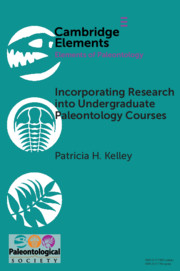Element contents
Incorporating Research into Undergraduate Paleontology Courses
Published online by Cambridge University Press: 24 October 2018
Summary
Keywords
- Type
- Element
- Information
- Series: Elements of PaleontologyOnline ISBN: 9781108681643Publisher: Cambridge University PressPrint publication: 15 November 2018
References
- 19
- Cited by

